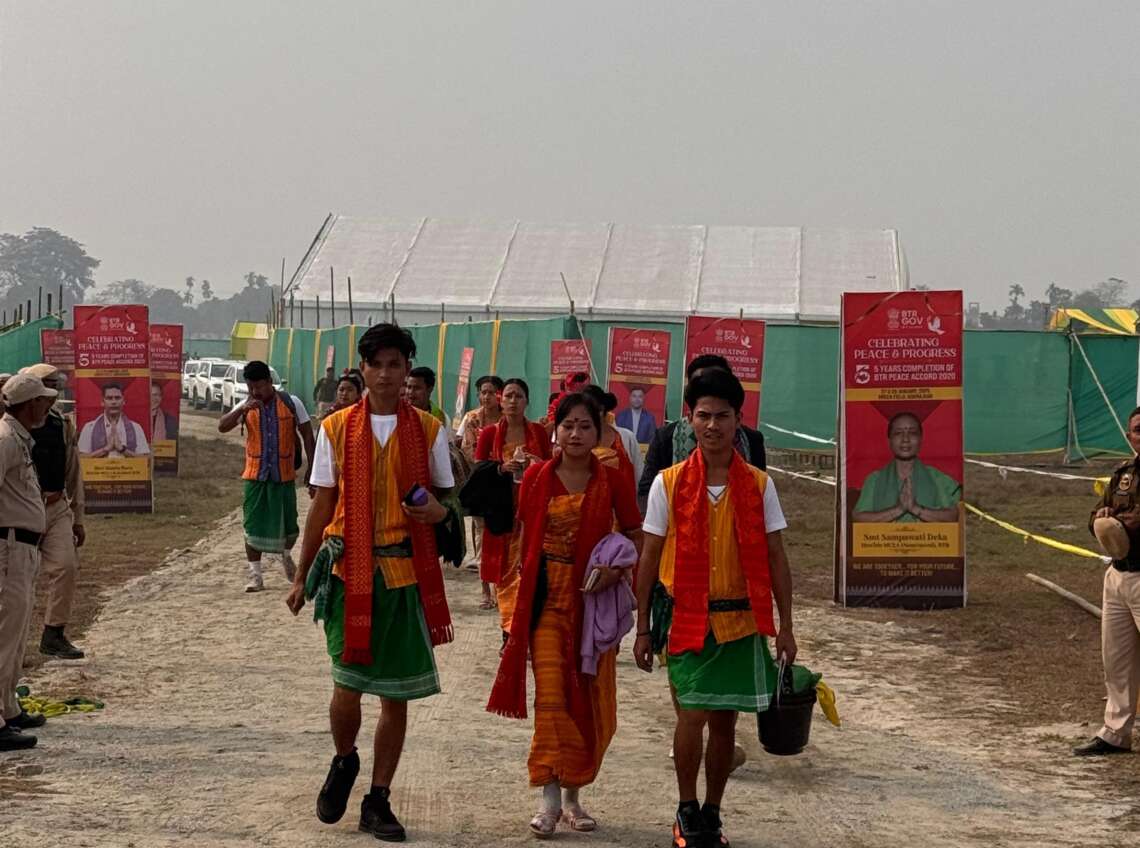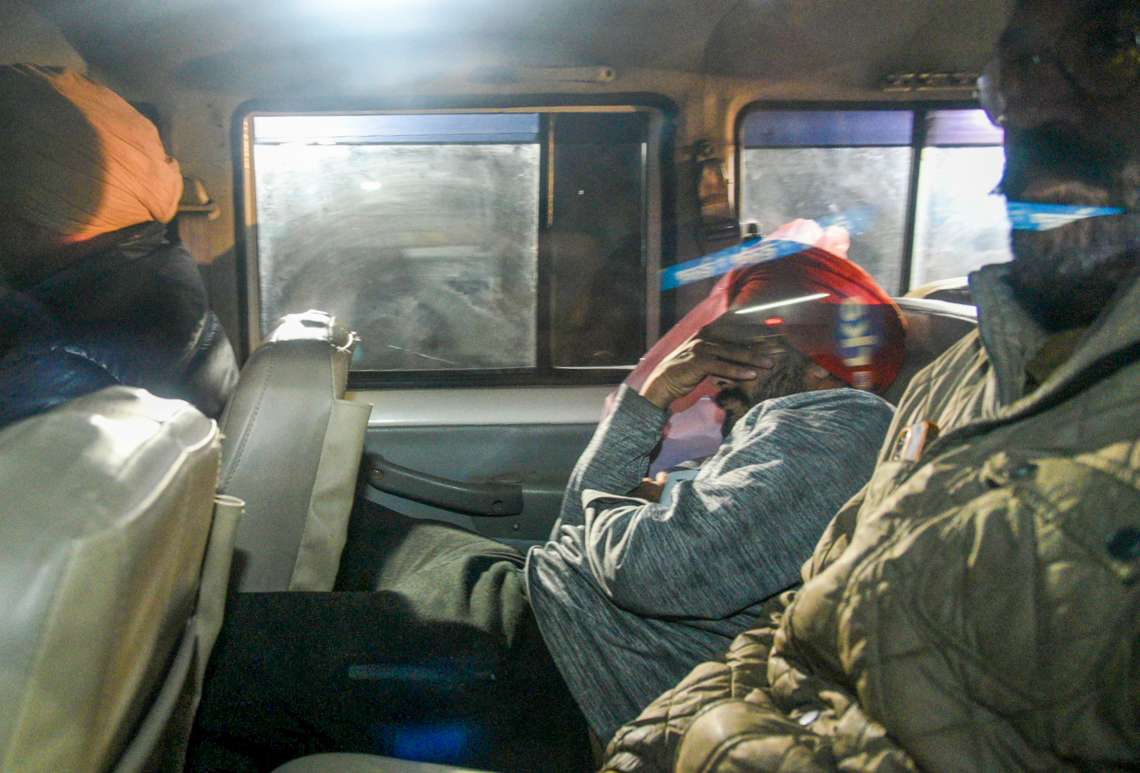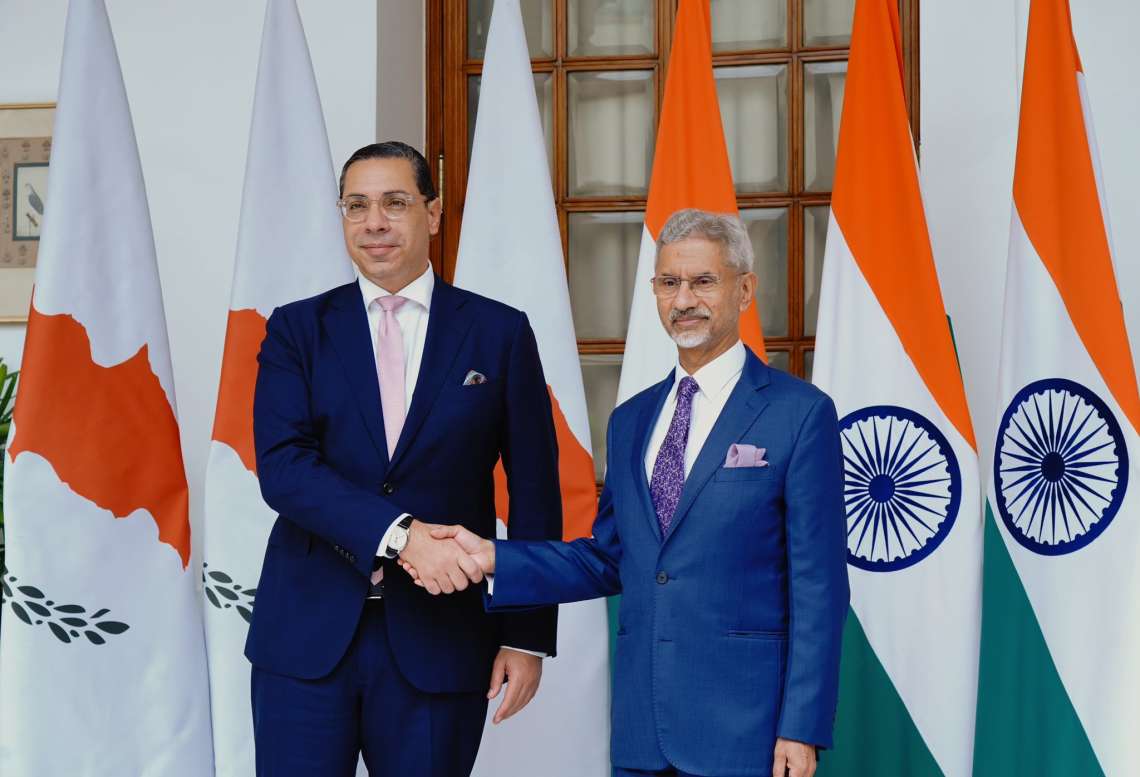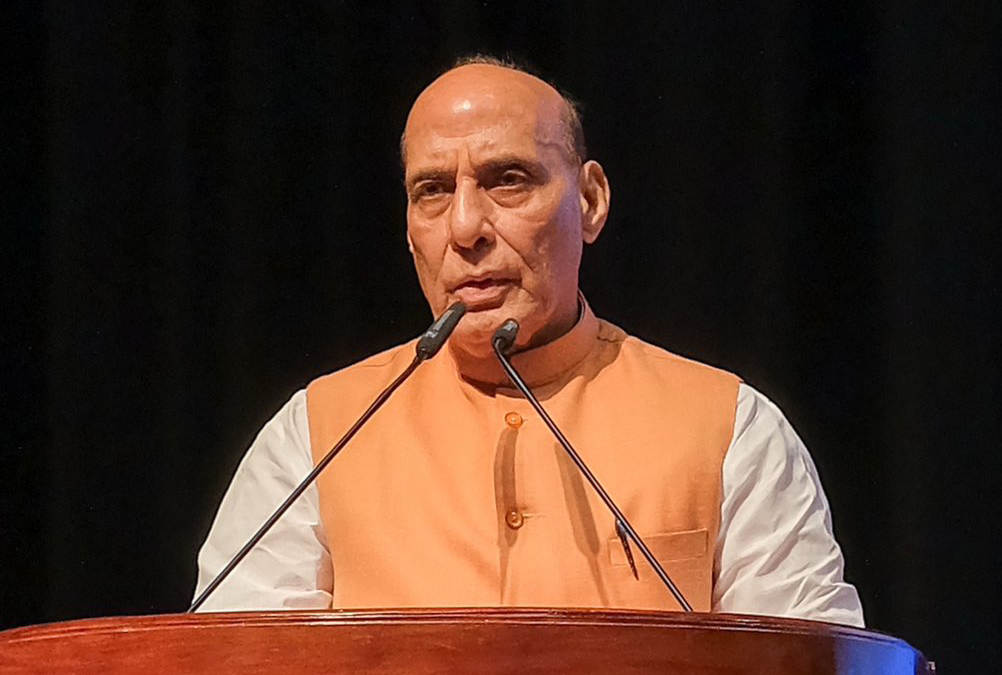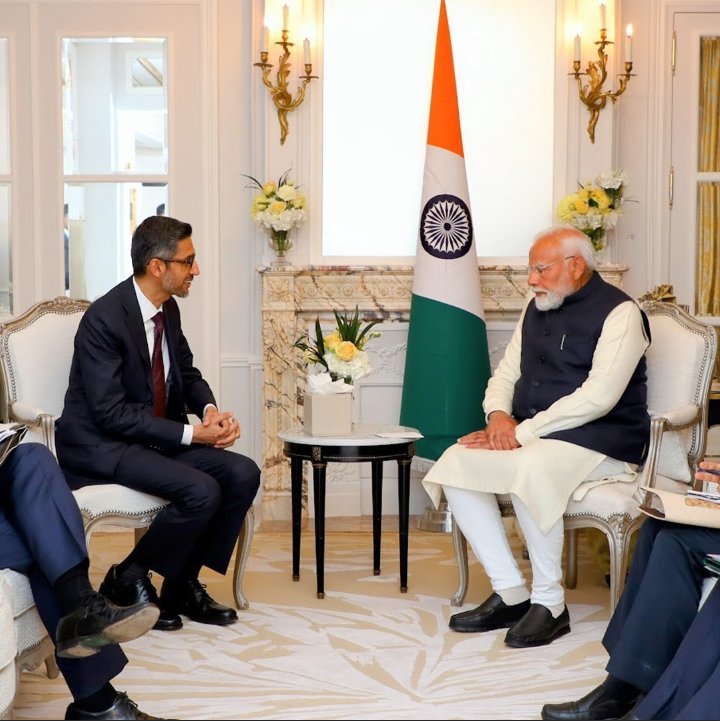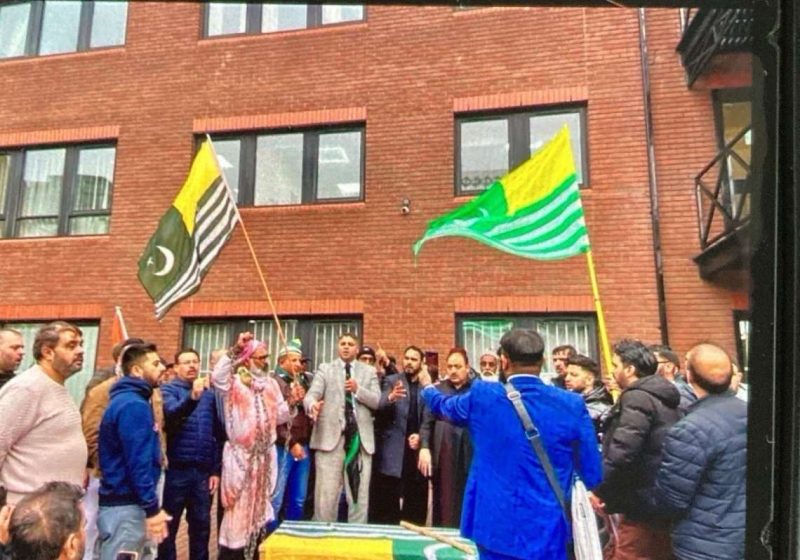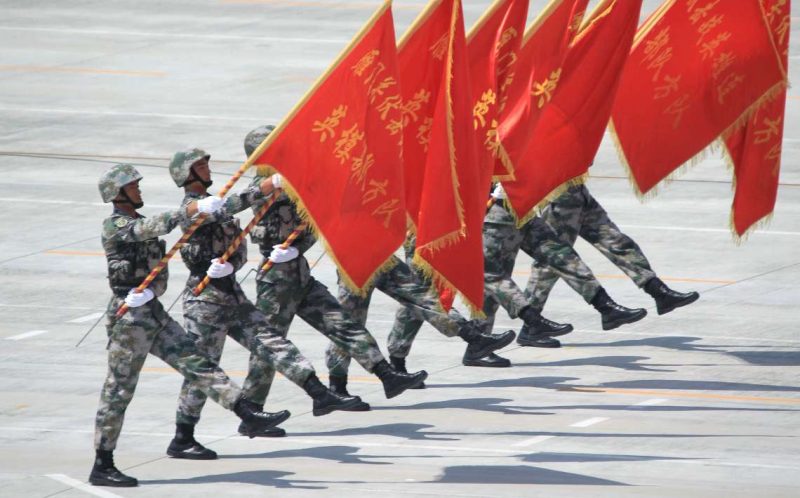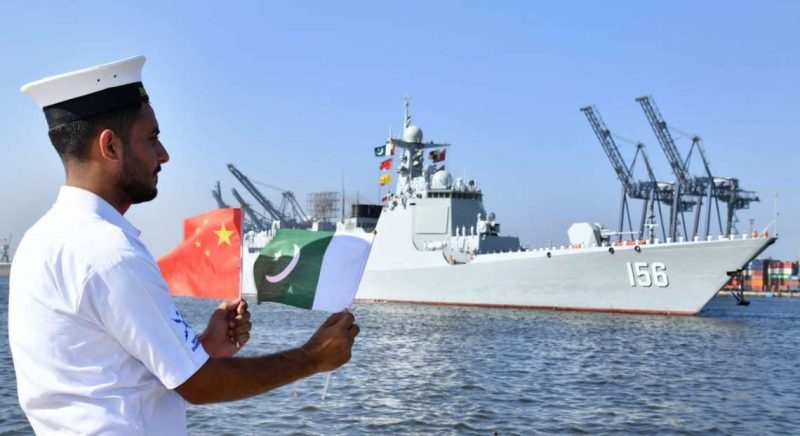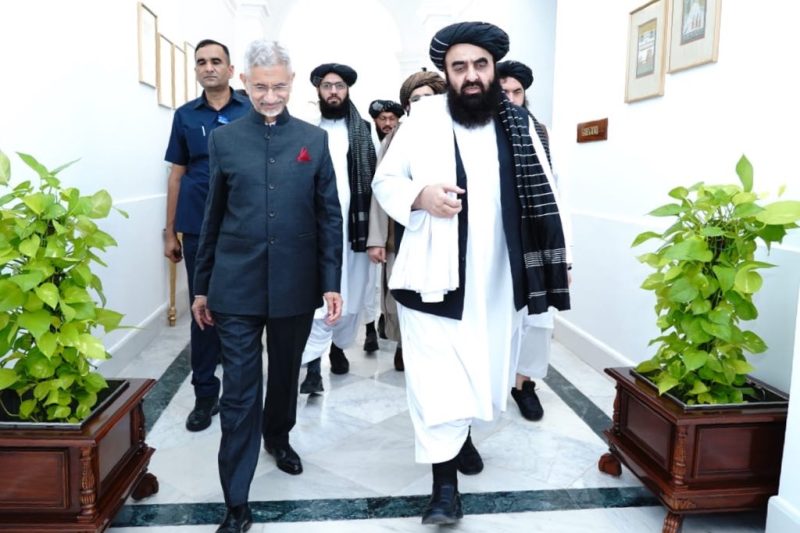With peace now achieved, Bodoland is focused on growth, development, prosperity, and tourism, aiming to improve the quality of life for its people. After years of bloodshed, displacement, and loss, its resilient citizens are finally ready to embrace a brighter future, a special report by Ashok Parameswar
Bodoland, once infamous for its history of violence and insurgency, has now become the epitome of development and resilience. The region of Bodoland, in Assam, has long been rooted in violence and ethnic conflict. However, the days of violence—particularly the decades of turmoil—are now behind. The light of peace and harmony has finally reached Bodoland, one of the autonomous regions in Northeast India, under the leadership of Pramod Boro, the Chief Executive member of the Bodoland Territorial Region (BTR). This transformation stands as an example of how a region once riddled with chaos—situated at the heart of Northeast India, connecting various states—has become a land of peace after decades of violence and failed attempts at reconciliation.
Now that peace has been achieved, Bodoland is focused on growth, development, prosperity, tourism, and providing a better quality of life for its people. These individuals, who have long endured the aftermath of heavy bloodshed, displacement, and loss, are finally ready for a brighter future.
However, remnants of violence and unrest still linger, as the region continues to face challenges with inadequate infrastructure, such as roads, banking facilities, and other essential services.
As we know, tourism is a major revenue stream for northeastern states like Assam, alongside agriculture and farming. The “Seven Sisters,” the states that share fragile borders with neighbouring countries, possess diverse cultures and traditions that many other Indian states cannot claim. The peace now thriving in Bodoland is largely attributed to the peace accord signed in 2020, a milestone that marked a new era for the region. The fifth anniversary of this accord isn’t just a commemoration of a document—it also serves as a benchmark for the region’s growth and development.
The Bodo Peace Accord, signed on January 27, 2020, between the Ministry of Home Affairs, the Assam government, and Bodo groups, marked a historic milestone. It led to the surrender of arms by militant factions and the disbanding of several armed organisations, paving the way for lasting peace and stability in the region.
Since the signing of the tripartite Bodo Accord, Pramod Boro and his council, in charge of the Bodoland Territorial Region, have worked tirelessly to change the region’s image both nationally and internationally. By boosting tourism, agriculture, infrastructure, and economic growth, their goal is to make Bodoland a global attraction and provide a better living environment for its people. As Chief Executive Councillor, Pramod Boro has taken every possible step to ensure that Bodoland is marked on the tourism map and to eliminate its negative image.
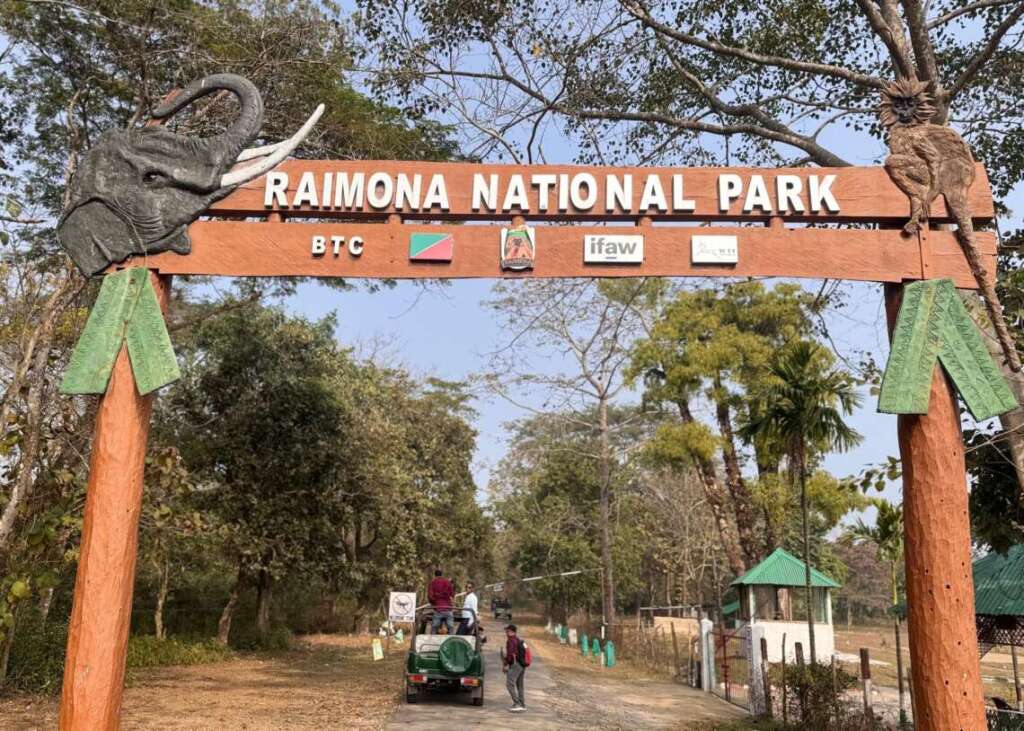
Thriving Eco-tourism
Bodoland is one of the regions that shares a border with Bhutan, India’s cherished neighbour. The region is rich in forest resources, and its potential for ecotourism is vast. One of the most notable natural treasures of Bodoland is the Manas National Park, which has earned international recognition for its unique biodiversity.
The Forest Division of the Bodoland Territorial Region (BTR) government has spearheaded transformative efforts to preserve the region’s biodiversity. Since the signing of the Bodoland Peace Accord, these efforts have intensified, focusing on the protection of vital ecosystems such as the Manas and Raimona National Parks. These green jewels are now more accessible than ever to visitors, with the expanded Bhutan border further enhancing the region’s appeal.
Post-peace accord, both Manas and Raimona National Parks have opened up to activities like jeep safaris, river rafting, and wildlife spotting, including sightings of rare species like the golden langur. Exploring Raimona National Park offers one of the best forest experiences, a stark contrast to the area’s previous history of insurgency and violence, which had once overshadowed its potential.
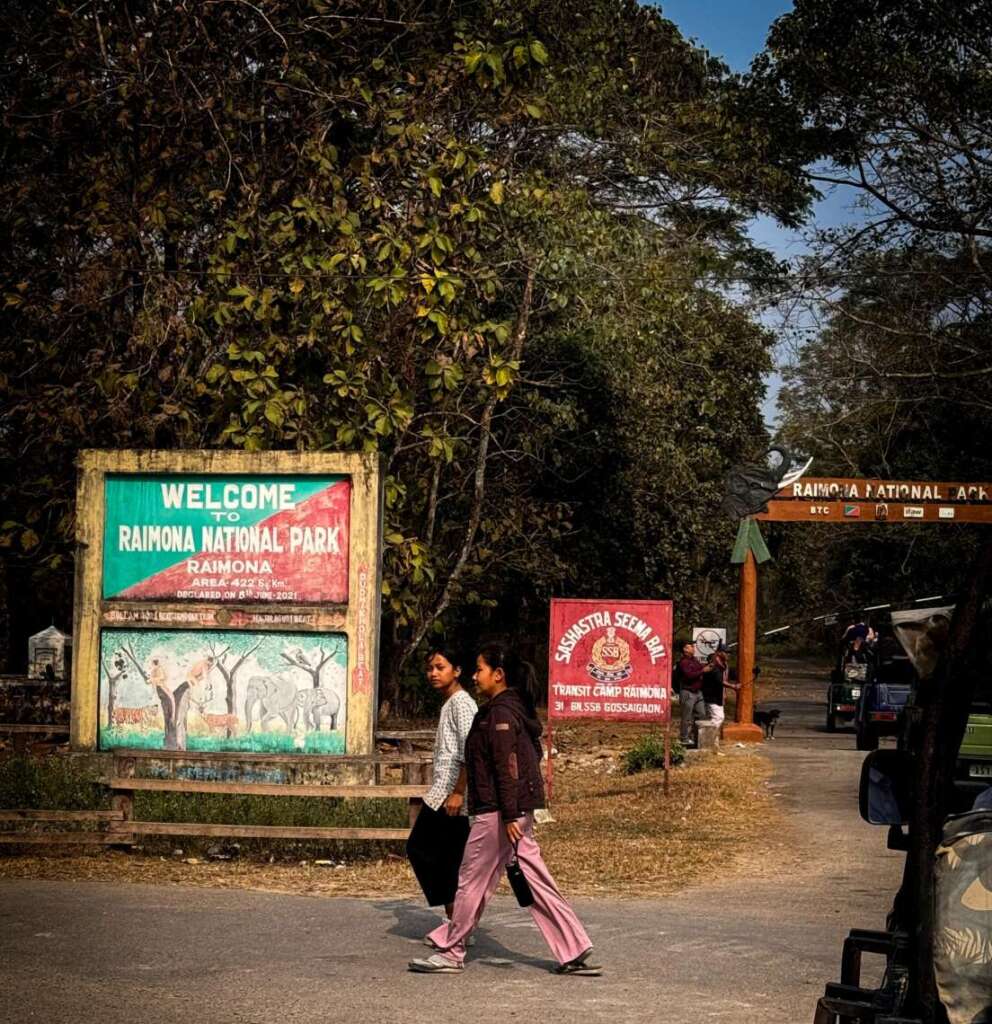
Historically, these national parks were hotspots for insurgents and poachers. However, a remarkable transformation has taken place. Many of those once involved in poaching and insurgency have now become the region’s guardians. More than fifty former insurgents, who laid down their arms as part of the peace accords in 2020, have since become protectors and caretakers of Bodoland’s forests.
The former destroyers are now the dedicated protectors of the region’s natural treasures. This shift exemplifies how rural tourism can drive growth and contribute to the prosperity of a region. Manas National Park, once labeled as a World Heritage site in danger, is now on the path to revival, all while retaining its unique charm and ecological significance.
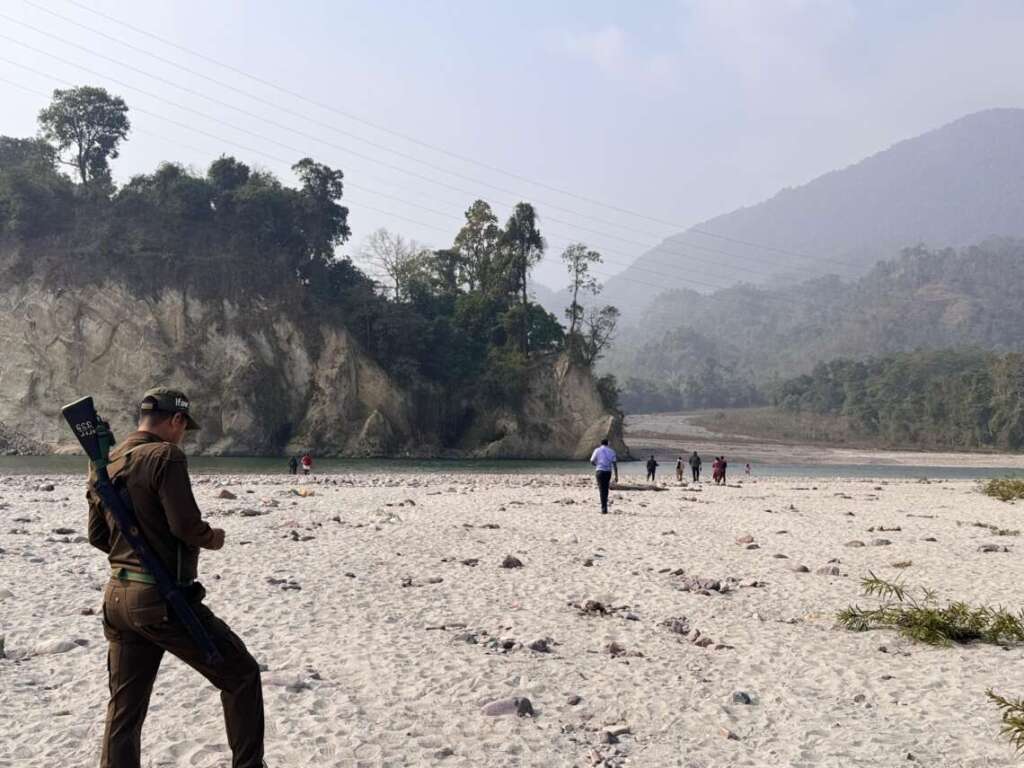
Hope from Bhutan
Bodoland is poised to emerge as a key gateway to Bhutan, with plans for enhanced rail connectivity linking Guwahati and Bhutan, passing through the Bodoland region. If realised, this rail link will establish Bodoland as a vital gateway between India and Bhutan, bolstering bilateral relations and fostering regional tourism.
In a bid to further boost tourism, the Bodoland Territorial Council (BTC) is working on a cross-border tourism circuit that will connect Bhutan, Sikkim, and other Northeastern states. To kickstart this initiative, the BTC has allocated Rs 28 crore for the development of the tourism circuit at Srirampur, located along the Assam-West Bengal border, officials said.
Pramod Boro, Chief Executive Member of BTC, emphasised the importance of the railway connection with Bhutan and the upcoming airports near the BTC region. He believes these developments will be pivotal in strengthening the region’s tourism potential. “We will soon have railway connectivity between Assam and Bhutan, and the construction of airports in Bhutan near the Assam-Bhutan border will further enhance tourism. We have already finalized the land for the tourism circuit at Srirampur in Kokrajhar district,” Boro stated.
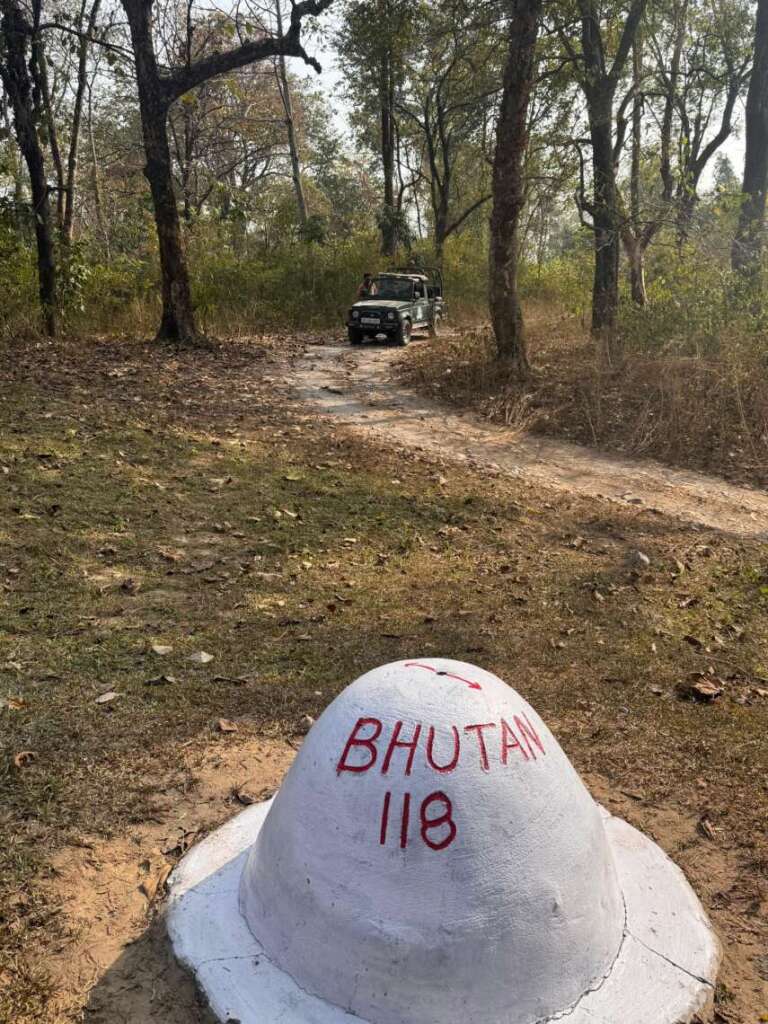
However, the region’s efforts to improve air connectivity face some challenges. Rupsi Airport in Kokrajhar, built under the UDAN scheme to enhance connectivity and tourism in Bodoland, has faced setbacks. Despite the resumption of services with Alliance Air in November following a year-long shutdown, frequent flight disruptions continue to hinder tourism activities such as jungle safaris and river rafting.
Pramod Boro has criticised airlines for their reluctance to operate, calling on private sector players to support the region’s growth following the peace process.
While discussing Assam’s relationship with Bhutan and its infrastructure initiatives, Assam Chief Minister Himanta Biswa Sarma highlighted the strategic proximity of the Bodoland Territorial Region (BTR) to Bhutan. He noted that Bhutan is developing a modern city akin to Singapore, with numerous tourism-related projects that will benefit Bodoland, which lies just eight kilometers from the international border.
CM Sarma revealed that he had already discussed these developments with Bhutan’s King, Jigme Khesar Namgyel Wangchuck. Additionally, he will meet with Bhutanese Prime Minister Dasho Tshering Tobgay, who is set to visit Assam next month for the “Advantage Assam” business summit, which will be inaugurated by Prime Minister Narendra Modi.
From Ravagers to Rangers
Following the designation of Raimona as a national park, over 500 former poachers have voluntarily surrendered and transitioned into roles as guides and homestay owners.
Once deeply involved in poaching, these individuals have now become key protectors of endangered species, such as the golden langur, in Assam’s Kokrajhar district.
The golden langur (Trachypithecus geei), listed under Schedule I of the Indian Wildlife (Protection) Act, 1972, is granted the highest level of protection in India. It is also recognized as a rare species on the International Union for Conservation of Nature (IUCN) Red List.
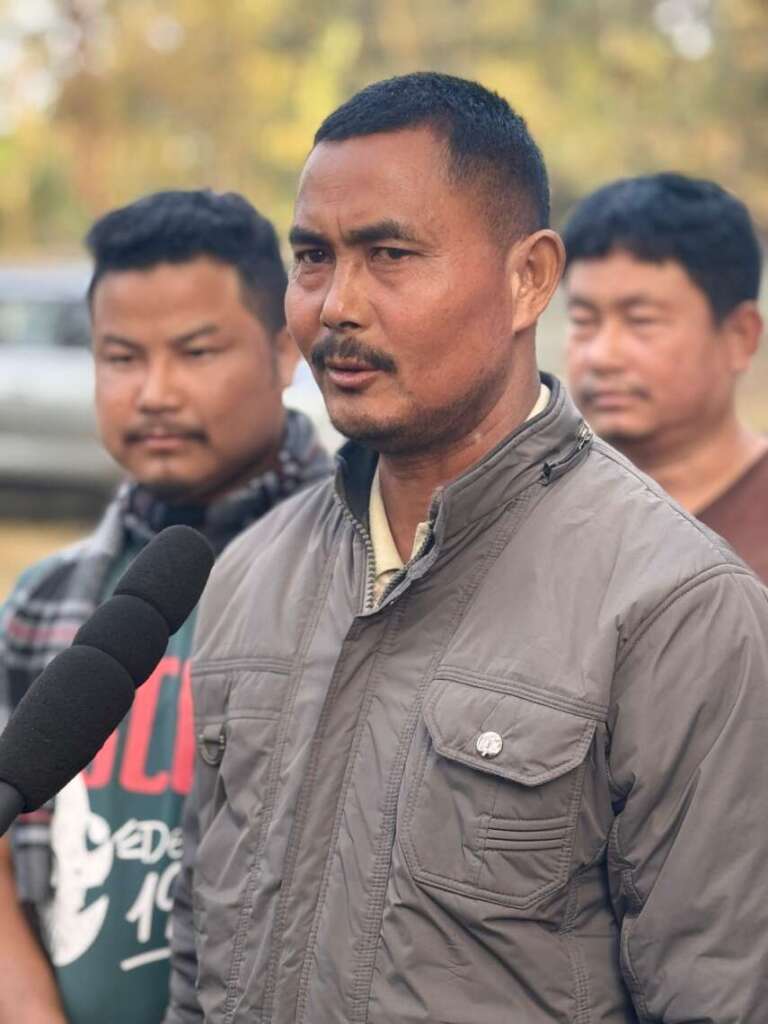
A senior official explained that these individuals came from peripheral areas. To support their transition, the Bodoland Territorial Council (BTC) provided a one-time financial grant of ₹50,000, helping 57 former poachers reorient themselves as forest volunteers, guides, taxi drivers, and homestay operators.
BTC Chief Pramod Boro further revealed that plans are in place to integrate them into agriculture, dairy farming, and other livelihood initiatives, ensuring sustainable and diversified income sources.
Weaving a Future
The vision of the Bodoland Territorial Council (BTC) extends beyond tourism and infrastructure development to include the empowerment of women and youth, as well as the improvement of livelihoods. One of the prime examples of this commitment is BTC’s Sericulture Mission. Over the years, the mission has made significant strides, contributing extensively to Assam’s silk industry.
The region, comprising five districts in Assam, is rich in the production of Eri, Muga, and Mulberry silk. With over 44,000 silkworm rearers and a dedicated workforce, the sericulture sector plays a vital role in the livelihoods of rural communities. The mission has seen a remarkable 300% growth in raw silk production, and the Bodoland region now contributes 30% of Assam’s Eri silk and 20% of India’s total production. This industry has provided employment to 40,000 rearers and 1,000 weavers.
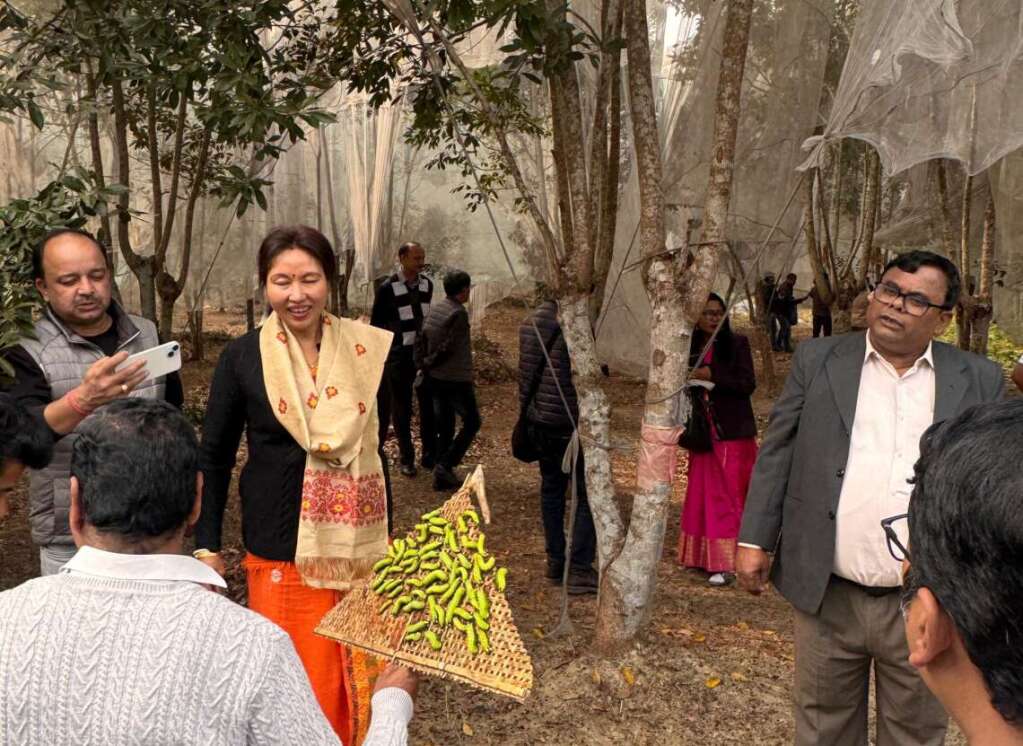
To further enhance the sector, the BTR government has established the Bodoland Silk Park in Kokrajhar. The park houses several factories, including a cocoon bank, silk printing and processing plants, and an Eri spun silk mill. As a result, Eri silk production has steadily increased, accounting for a major share of the region’s silk output.
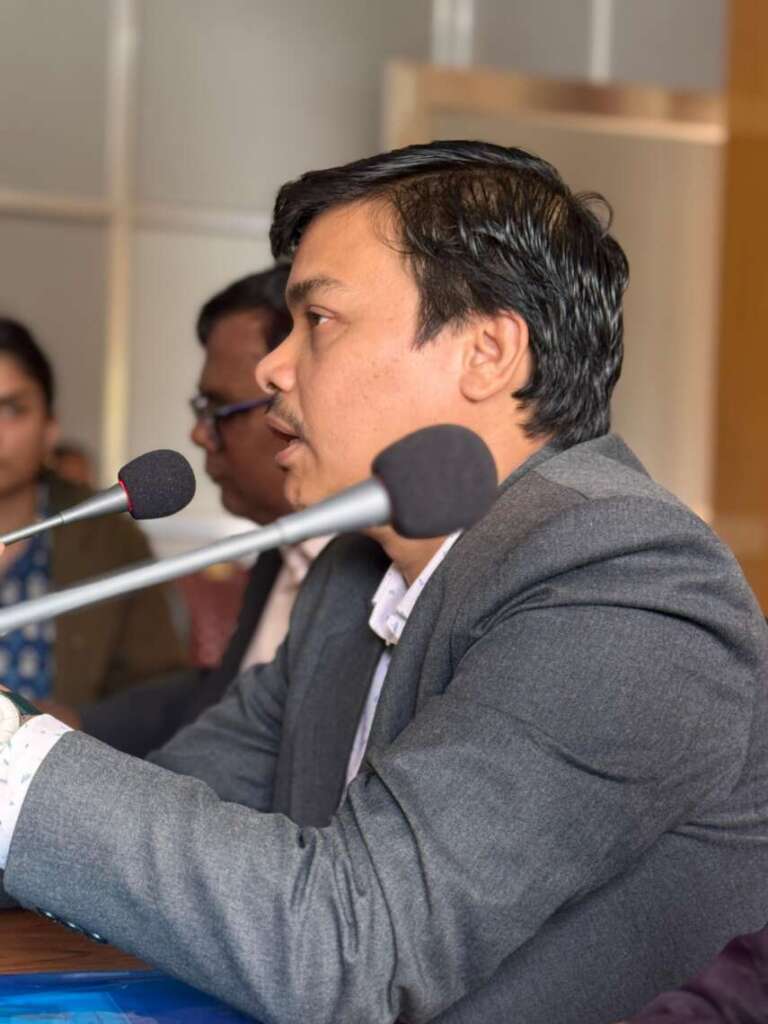
“Assam needs to have efficiency in its supply chain and access to more markets. We’re in talks with Bengaluru firms to explore alternative income opportunities, such as selling pupae.”– Ractim Buragohain ACS.
One inspiring example of the mission’s success is Behula Brahma, a Class VIII dropout from Borshijhora village in Kokrajhar. Since 2014, Brahma has become a role model through scientific silkworm rearing. She has achieved financial stability, earning over ₹1.3 lakh annually while supporting her family. With the training provided by the Bodoland Sericulture Department, she grows Eri host plants such as Kesseru and Tapioca, and has inspired local youth to follow in her footsteps. “Productivity has improved with better host plants,” says Brahma, proud of how her work has helped uplift her community.
In addition to the Sericulture Mission, BTC has made significant strides in protecting and promoting the region’s rich cultural heritage. The issuance of 21 Geographical Indication (GI) tags marks a major milestone in these efforts. These GI tags recognize Bodoland’s unique heritage and traditions, including Bodo Dokhona, Bodo Eri Silk.
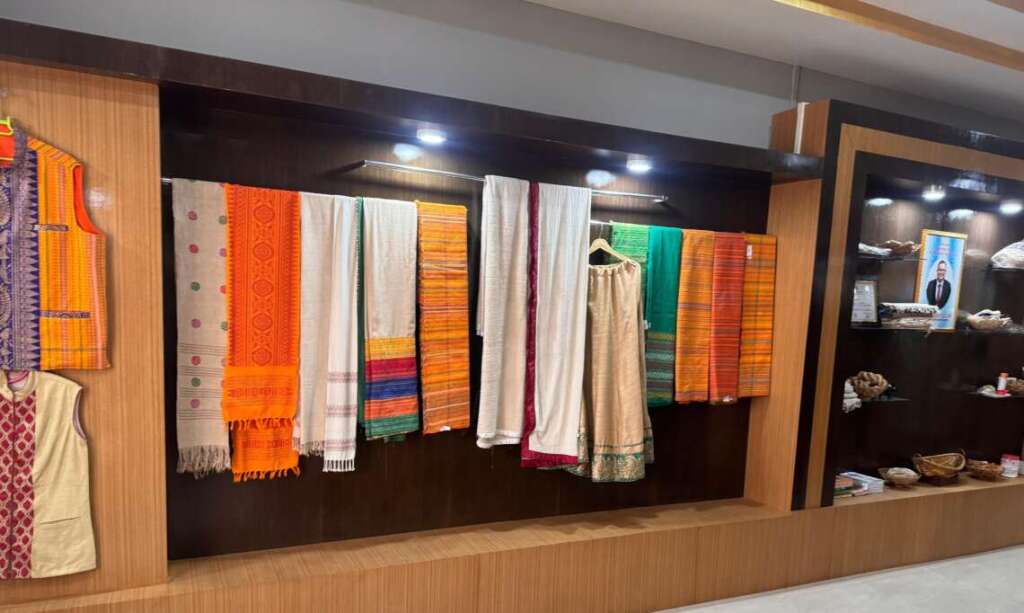
‘Peace comes first’
As Bodoland marks the fifth anniversary of the historic 2020 Bodo Peace Accord, BTC Chief Pramod Boro reflects on the journey toward peace and stability. The agreement, signed between the Union government, the Assam government, and various revolutionary groups, stands out for uniting factions with different ideologies under a shared vision.
Speaking to Asian Lite, Boro expressed both optimism and caution. “Bodoland is peaceful now, but its future depends on the commitment of both the state and Union governments,” he said. He made it clear that violent agitation is no longer an option. “We do not support any form of unrest. Guns should only be in the hands of defence personnel,” he stated firmly.
Boro has called for its inclusion under Article 280 of the Constitution to secure increased funding for the development of remote districts that endured decades of insurgency and are now on the path to peace.
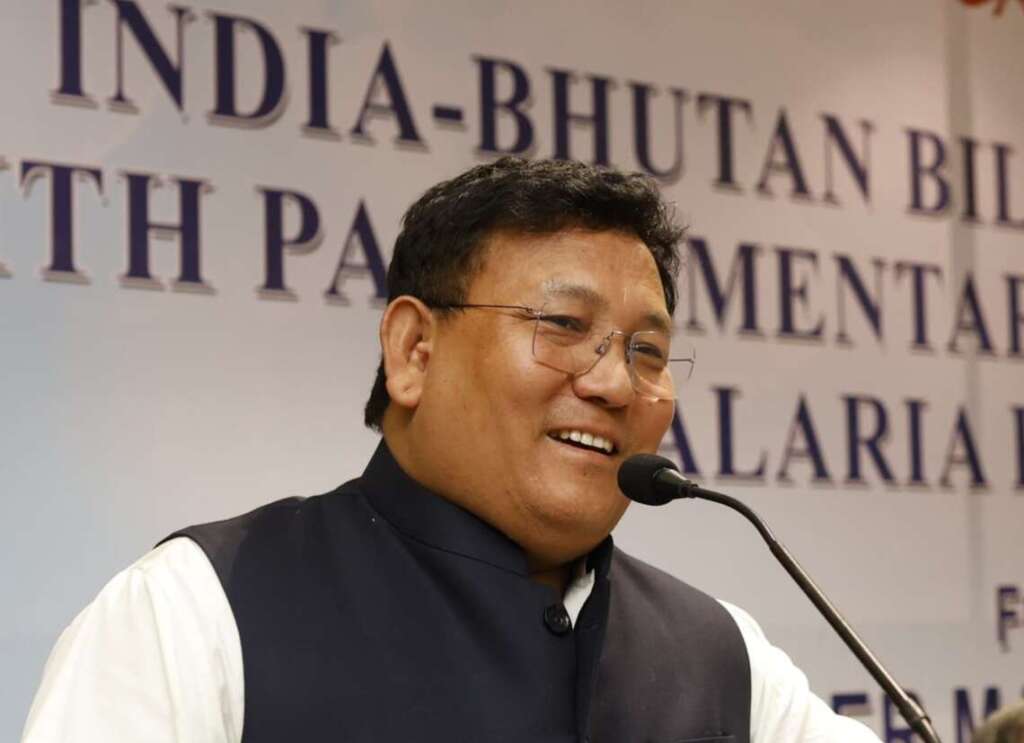
“I can confidently say that we are in a better place. I feel proud as an Indian. We don’t want our youth holding guns; they should be holding books, jobs, and opportunities.”— Pramod Boro
Reflecting on the past, Boro acknowledged the struggles that led to the peace accord. “Things were very different before—there was unrest and uncertainty. But now, I can confidently say that we are in a better place. I feel proud as an Indian. We don’t want our youth holding guns; they should be holding books, jobs, and opportunities.”
He recalled how challenging it was to unite different groups—some demanding a separate state, others seeking autonomy. “The Assam agitation of the 1980s saw widespread tribal participation, but when the Assam Accord was signed in 1985, tribals were excluded. This exclusion led to the Bodoland movement in 1987, which resulted in years of violence and loss of lives,” he explained.
Despite these deep divisions, Boro noted that even armed factions believed in national unity, citing how militant groups paused their activities during the Kargil conflict. “The peace process wasn’t easy. It took over a decade of dialogue, but eventually, everyone agreed that armed struggle was not the way forward. The 2020 accord brought all factions to the table and integrated them into the mainstream.”
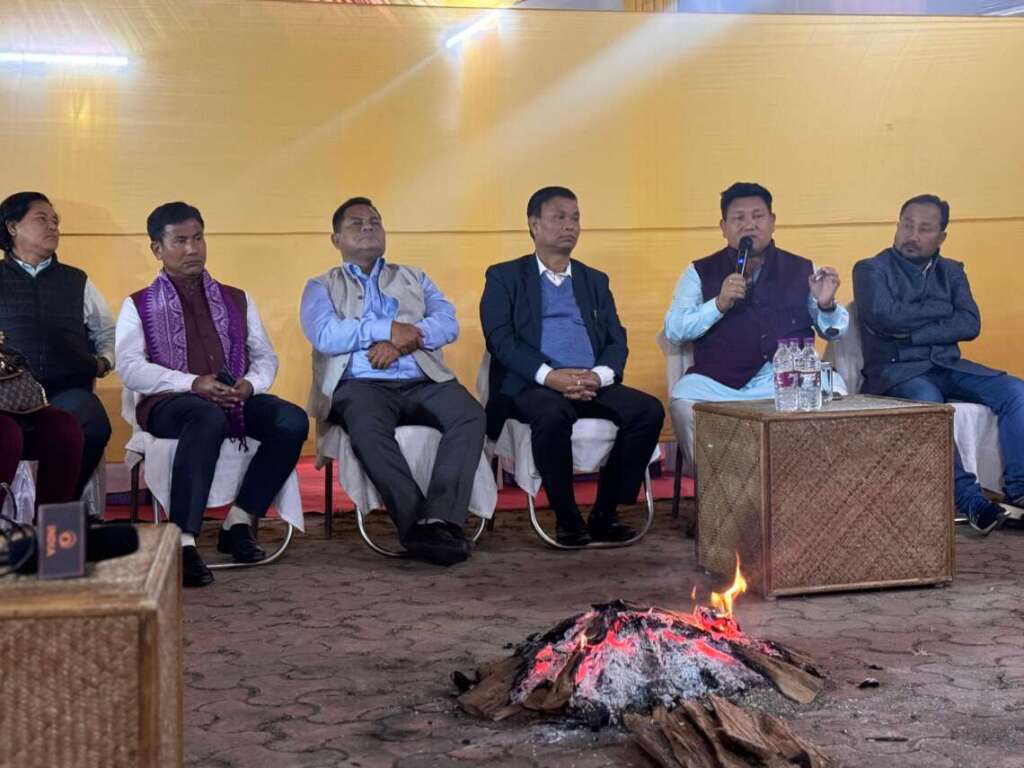
Looking to the future, Boro shared that a vision document outlining Bodoland’s developmental priorities will be published by March 2025. However, he acknowledged the ongoing challenges, particularly the lack of industry and infrastructure. “One of the biggest challenges is youth migration. Many young people leave Bodoland in search of opportunities. During the conflict, banks and businesses shut down. We are working hard to bring them back, but funding remains a challenge,” he said.
Boro also emphasised their demand for a Bodo regiment in the Indian Army and greater representation of Bodoland’s youth in paramilitary forces. While some recruitment has taken place, he noted that the numbers remain insufficient.
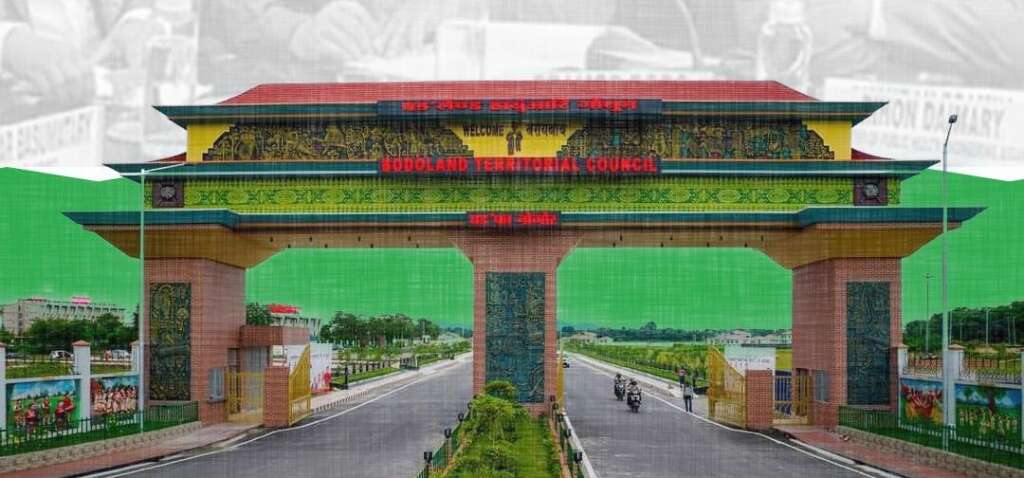
On the economic front, he pointed out that Bodoland requires at least Rs 5,000 crore for road development alone, yet the government’s annual budget allocation stands at just Rs 800 crore. “The long-term stability of the region depends on the proper devolution and decentralization of power. If these issues are handled wisely, we won’t return to unrest,” he stressed.
Boro also had strong words for the intellectual community, stating, “Many intellectuals contributed ideas during the agitation, but once peace returned, they disappeared. We need their continued engagement to shape the future.”
Regarding the issue of full statehood, Boro admitted that aspirations still exist but urged for careful consideration. “We signed the accord to bring peace and progress to our people. The idea of statehood may still be there, but we must think rationally before pushing for such demands. The leadership listened to us, and that’s why we signed the agreement. Ending violence was our most important goal.”
‘Eyes on the 125th Amendment’
On the occasion of the 5th anniversary of the BTR Accord, Assam Chief Minister Himanta Biswa Sarma expressed optimism regarding the proposed 125th Constitutional Amendment, stating that the Indian government is actively pursuing its implementation. Sarma stressed that this development is crucial for Assam’s continued progress.
The CM also outlined Assam’s transformation into a hub for semiconductors and new energy, showcasing the state’s significant strides over the past 3.5 years. These include the creation of 1.5 lakh government jobs without legal disputes, the preparation of 55,000 additional appointment letters, and major advancements in sectors like power and employment. The state has also successfully rehabilitated 7,000 individuals from forest areas, further promoting inclusive growth. Sarma spoke about ongoing discussions with the Government of India to establish a defence corridor, expressing confidence that Assam would secure this vital development.
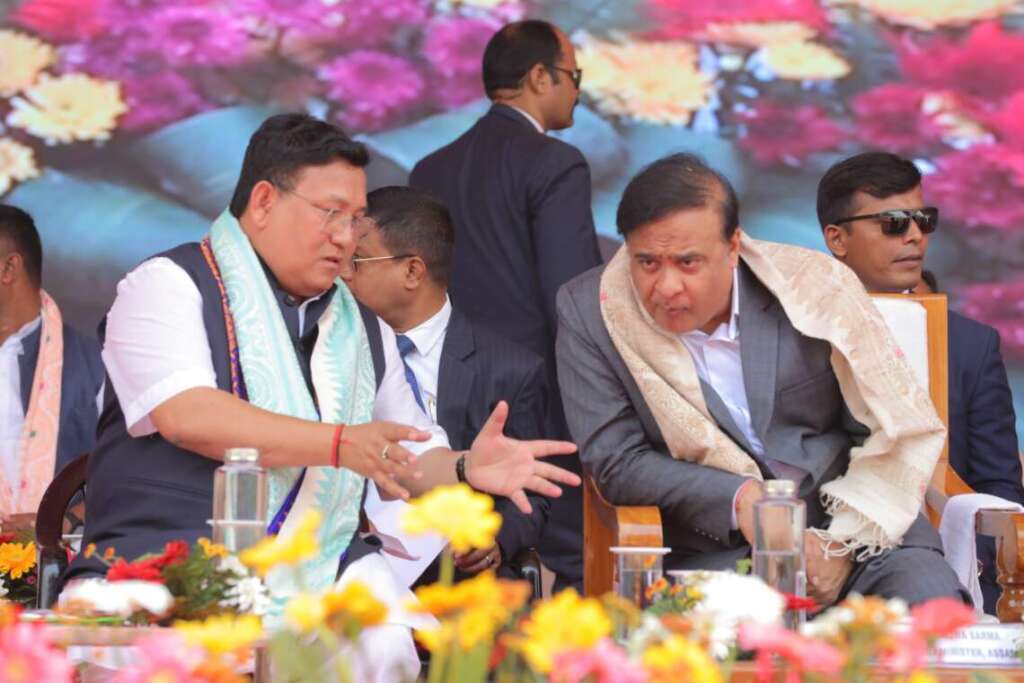
Reflecting on the remarkable transformation of the Bodoland Territorial Region (BTR), Sarma acknowledged the region’s journey from a period marked by violence and unrest to one now symbolizing peace and progress. Events like the Durand Cup, Santosh Trophy, and international football matches, such as the Oman Football Competition, are testaments to this positive change.
BTR’s development has been made possible through the collaborative efforts of the Modi government, the state government, and BTR authorities. Sarma also emphasised that the long-standing divide between Bodo and non-Bodo communities had been resolved, paving the way for sustained progress in both BTR and Assam.
Addressing concerns about increasing BTR’s budget, Sarma reiterated his commitment to self-reliance, noting that Assam’s budget had grown from Rs 80,000 crore to Rs 1.5 lakh crore during his tenure, without external aid. He assured continued support for BTR’s development, citing key infrastructure projects such as bridges, roads, and a railway line from Guwahati to Bhutan, which will reduce travel time to just two hours.
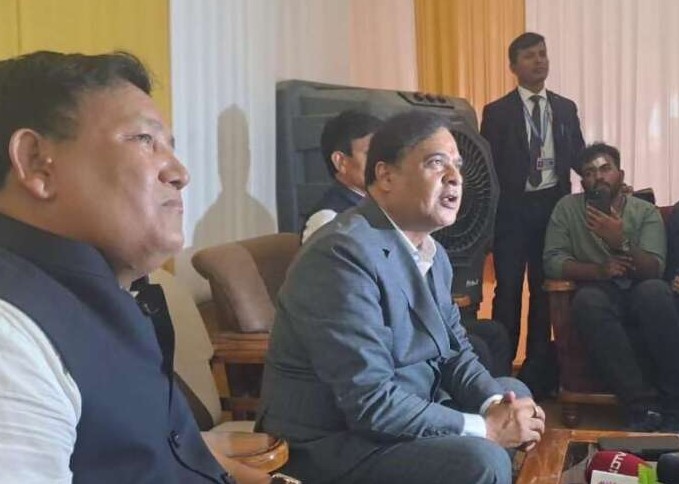
“Bodoland has no militants now, and the Bodo–non-Bodo divide is gone.” -Himanta Biswa Sarma
Sarma acknowledged that Assam’s efforts to attract businesses to BTR were challenged by the region’s violent past. However, he credited the transformation to focused efforts under Prime Minister Modi’s leadership. Key industrial projects in the region include the expansion of a refinery to 5 million metric tons and the establishment of a railway coach manufacturing factory.
On employment, Sarma highlighted the ongoing recruitment efforts for CAPF and Agniveer in BTR, with a focus on providing opportunities for the youth, particularly those from militancy-affected areas and Scheduled Tribes. He also discussed the region’s sports potential, announcing a Rs 150 crore investment to build another sports stadium, demonstrating the growing collaboration between BTR, the state, and the central government.
Regarding governance, Sarma reiterated that the state government does not interfere in BTR’s internal affairs, except for policing. He clarified that while BTR has full taxation authority, it prefers to receive a share from the consolidated fund, ensuring better financial support due to lower direct tax collections.
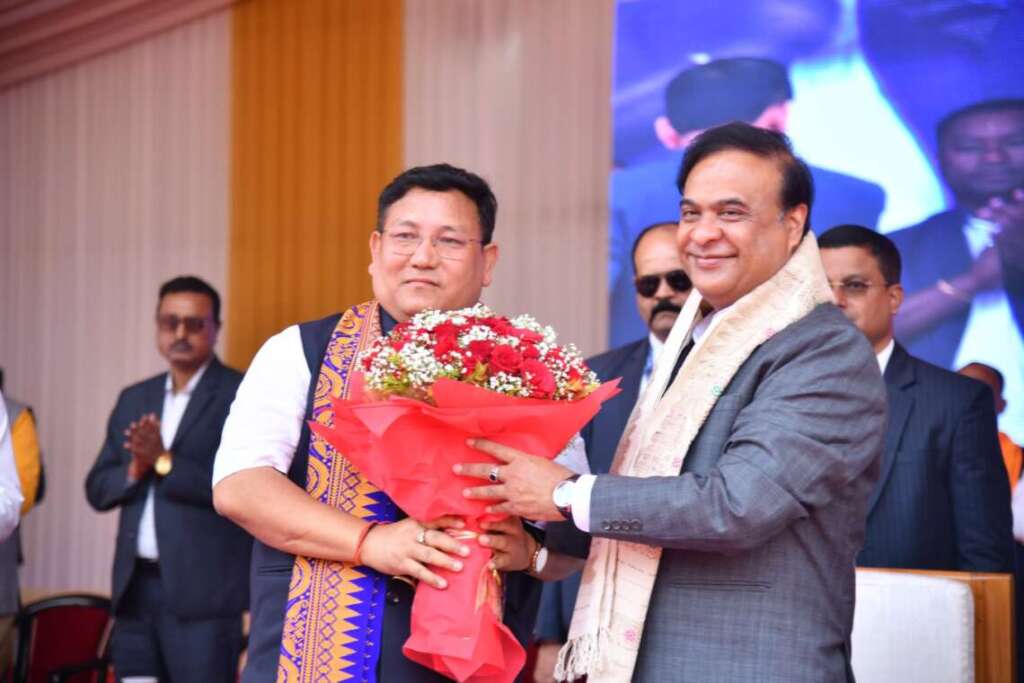
Addressing concerns about militant regrouping efforts and potential threats from Bangladesh, Sarma assured that Assam’s unity and commitment to peace would thwart such efforts. He emphasised the state’s vigilance along the porous areas of the Brahmaputra River, with advanced monitoring systems enabling the BSF to capture infiltrators daily.
Sarma also touched on various ongoing development initiatives, including the establishment of a Hindustan Petroleum campus, refinery expansion, and the construction of a BSF ordinance factory. He laid the foundation for a new university, and BTR now boasts 2 medical colleges and 3 universities, reflecting significant progress in education.
Finally, Sarma addressed the issue of China’s construction of a dam on the Brahmaputra, confirming that the Indian government is handling the matter diplomatically. While expressing concern over the potential environmental impact, the CM remained hopeful for a diplomatic resolution through ongoing talks between India and China.
ALSO READ: BTR Accord Turns 5, Hope for 125th Amendment”
ALSO READ: Assam’s Bodo Council Turns Up the Heat on Article 280


